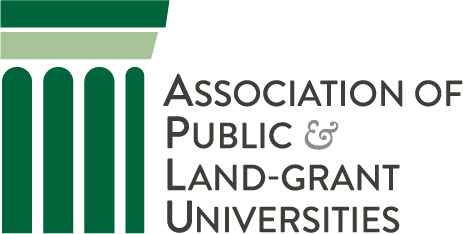The COVID-19 pandemic brought home (at least) two forceful lessons: that colleges and universities need more operational resilience and that Black, Latino, Indigenous, and poverty-affected students are disproportionately impacted when institutions are disrupted. Lack of resilience and of equity are challenges that compound one another and get exposed under stress. To prepare for the next stress, wherever it might come from, colleges and universities should invest in flexible course design.
For example, the effect of COVID-19 on our schedules and classroom spaces was unpredictable, so the ideal course should be designed to be adaptable, says Karen Vignare, Ph.D., Executive Director of Personalized Learning at the Association of Public Land-grant Universities.
Vignare is one of the co-authors of Optimizing High-Quality Digital Learning Experiences: A Playbook for Faculty, which is published by Every Learner Everywhere in collaboration with the Online Learning Consortium and the APLU. The playbook is an update of a version published early in the pandemic to help faculty prepare for the fall 2020 term.
Flexible course design to build organizational resilience and in support of equity is an underlying theme of the playbook. The co-authors include practical recommendations that emphasize limited disruption, designing for broad accessibility, and giving students more control and options over how they learn. Below Vignare shares a sample of approaches to flexible course design.
Plan for multiple scenarios
Vignare and her colleagues at APLU work with instructors to “think thoughtfully about how they would design their course, always keeping a digital version in mind.” Even if teaching is happening on campus, she sees several possible scenarios — during and after the pandemic — that require flexibility and the ability to do some work online.
- There may be fewer students on campus due to social distancing, and an instructor may not be able to hold face-to-face office hours with them.
- A college could go “back to normal” but only temporarily. “You may get six weeks into the semester,” Vignare says, “and suddenly we have a virus resurgence in a hotspot.” Then it could be like March 2020 all over again.
- After you are back in the classroom, one student may let you know they cannot come to class for two weeks because their child has the virus.
- You may be exposed to the virus and have to isolate at home while students can continue meeting on campus.
This is where flexible design plays an important part in planning for an uncertain future. Vignare advises preparing for multiple scenarios, depending upon public safety. She counsels instructors planning face-to-face courses to also plan a digital version.
HyFlex model and backward course design
Two strategies that promote flexible design include the HyFlex Model and backward course design.
- Educause defines the HyFlex Course Model as course design that enables students to attend sessions in either the classroom or online or both. In this flexible course structure, students can change their mode of attendance by week or by topic, depending upon the need.
- Backward course design, developed by Grant Wiggins and Jay McTighe in their book, Understanding by Design, recommends first defining goals for student learning and then choosing how to assess progress toward those goals and what instructional methods and learning activities will promote progress. This model may be effective for any type of course development including in classroom, online, and blended.
“Using either model,” Vignare says, “you would have carefully thought through your objectives whether it was an online course, an in-classroom course, or a blended course.”
More on this topic — Planning for a Blended Future: A Research-Driven Guide for Educators
Ongoing benefits of flexible design
Vignare advises that “if you get the luxury of face-to-face instruction, it will still be useful to include digital tools in the classroom. You may find that you want to carry this modality forward, post-COVID.”
Vignare cites an example where digital learning gave students an advantage when flexibility was suddenly required. She has been working with chemistry professors at the University of Toledo where some — but not all — were using adaptive courseware and other digital learning tools. When COVID-19 forced everyone to remote learning, the students who were already working with adaptive courseware had a shorter gap to bridge, since they had already been doing some work online. Some of those digitally confident students offered help to other students new to online learning.
“We have high evidence that using adaptive courseware works well in face-to-face instruction,” Vignare says. “And we have good evidence that it helps students when they work in an online environment.”
More on this topic — Improving Critical Courses Using Digital Learning & Evidence-based Pedagogy
Design for universal access
Flexible design can also make courses more accessible for all over the long term. The resources section of Optimizing High-Quality Digital Learning Experiences includes guidance on designing for students with disabilities.
“Because you had to move your class online quickly, you might not have been aware of the best methods for addressing specific disabilities,” Vignare says. “Instructors are now being asked to think about how to improve accessibility.”
She also suggests consulting with your school’s Disability Office for guidelines on accessibility.
Related reading — 5 Ways to Put Equity at the Heart of Instructional Design
Flexible course design now will pay off in the future
Essentially, flexible course design is imagining how faculty can promote learning when some unknown set of students may not be able to attend class for some indefinite period of time.
In that sense, flexible course design is an investment in the future, because the pandemic is not the only barrier to access. Colleges and universities will face unexpected disruptions, and individual students will continue to have individual needs. Flexible course design helps faculty prepare for the ongoing consequences of COVID-19. And it helps design courses that work over the long term, ready for every student.
If you’ve planned effectively for this fall, “you’ve done yourself a favor by thinking ahead on how to be more flexible,” Vignare says. “It’s a unique opportunity to rethink your course.”
Download Optimizing High-Quality Digital Learning Experiences: A Playbook for FacultyOriginally published June 2020. Updated August 2021 with additional information and references.



